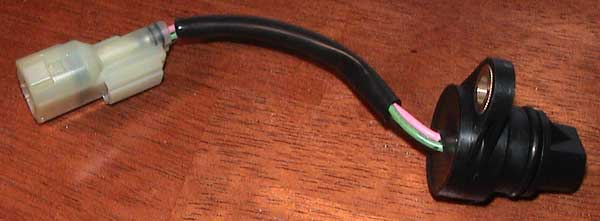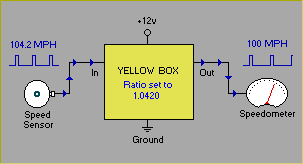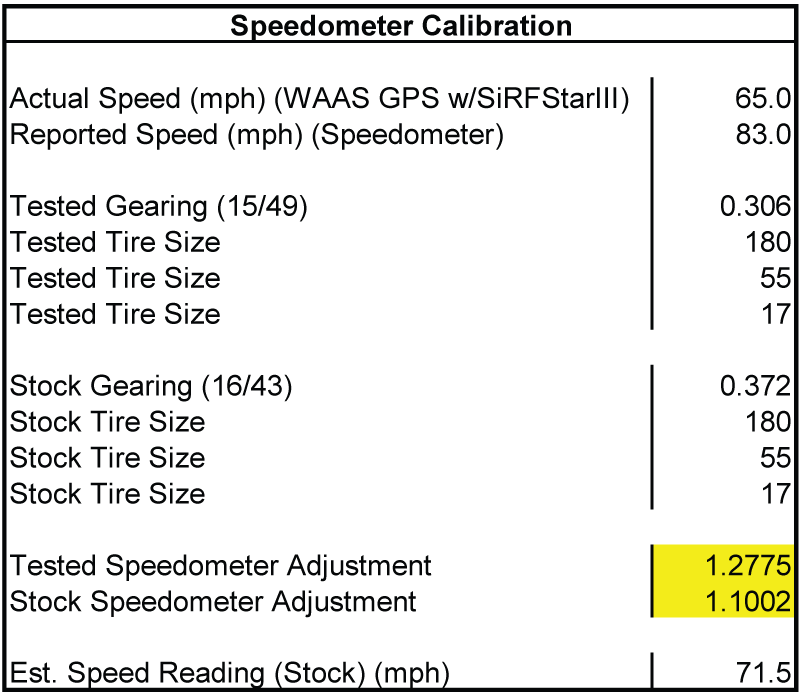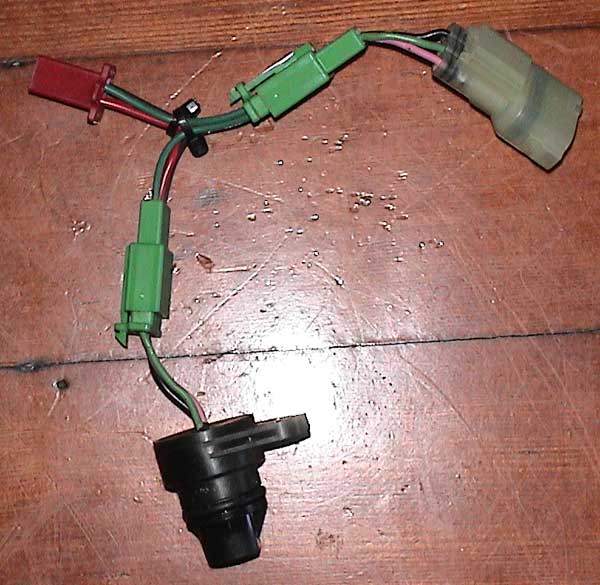Speedometer Calibration
Changing the stock gearing on a modern sportbike is practically manditory for honest sport riding. One disturbing side effect of this is that the speedometer goes drastically out of calibration, reading a much faster speed than actual. This should be corrected for honest information on speed, a lower odometer reading, and accurate information for the bikes on board computer.
Contents
Stock speedometers read fast
All vehicles come with speedometers that read a faster speed than actual. Since they can never be exact, Speedometer systems are designed to err on the side of higher speed readings than actual. Two good reasons exist for this; the lawers are happy since no on can claim that their bike was going faster than they thought and that's why they got hurt, and because a slow bike can seem like a real fast bike if the display says so.
Also, in addition to increaseing the error displayed on the speedometer, re-gearing is going to mess up the bikes speed data. The computer may use this information for a host of fuel and ignition calculations, so it is worth having right.
How speedometers works
Most modern sport bikes use a pulse generator on the countershaft in the gearbox to gauge bike speed rather than the older system of gearing a spinning shaft off of the rotation of the front wheel. The older system would add error to the speedo anytime the front wheel or tire changed diameters. The current system will add error anytime the rear wheel or tire changes diameter AND when the final drive gear ratio is changed. The tire diameter also changes at speed, so any speedo can only be "correct" at one speed.
Testing speedometer error
Testing the speedometer error involves getting a precise speedometer reading at the same instant as getting a precise actual speed reading. The bike must be moving at a constant velocity, with no acceleration or deceleration.
Since it is impossible to have an accurate calibration over the entire speed range that the bike is capable of going, a target speed should be chosen where accuracy is most needed. 55 mph is probably one of the best targets since it is a common speed limit.
- Driving by fixed police radar speed boards.
- Assistance from a police officer or someone with an accurate hand held radar gun.
- GPS Device. WAAS w/SiRF StarIII prefered.
When dialing the speedo in at a local police speed billboard, it was out by a factor of 1.135 with non stock 15/47 gears. This is yet another example that the real world vs. calculations can be off by considerable margins. This gives me a built in speedo error factor of 1.045. Once you have a tested and proven correction factor given any gearing, you can correct for gear changes without testing the vehicle again. Now that I have re-geared to 15/50 (dropped back to 15/49 just after this) I know that my correction factor will be 1.205.
Commonly available calibrators
- Yellow Box Speedometer Calibrator (www.blackrobotics.com). Calibration range +/- 28% in increments of 0.25%. Requires splicing or custom sub-harness.
- Speedohealer (www.speedohealer.com). Calibration range +/- 99.9% in increments of 0.1%. OEM connections.
How the calibrator works
The Math
If you are calibrating with stock gearing:
If you are calibrating with non-stock gearing:
A handy spreadsheet I made:
Wiring options
After studying my bikes wiring diagram, I made a custom jumper using some junk old harness parts (Honda 3-pin disconnects) so that I would not have to cut my stock parts or wiring harness. While researching the install of this part, I had read online that someone jumped into the harness near the speedometer. The wiring diagram shows that the pink (pulse) line splits just after the pulse sender with one end going to the ECM and the other going to the speedometer. If the pulse is not corrected JUST after the pulse sender, the computer gets one speed pulse while the speedo will get another. This could have poor affects on the speed based fuel compensation for the ram air and gear based mapping features on most current bikes. The Yellow Box MUST jump the line AT the pulse sender.
The length of the wires that come on the Yellow Box are just long enough to be routed to the rear of the bike's glove box. I velcroed my Yellow Box right next to my Power Commander. When installing the Yellow Box the way that I have noted, make sure to cut as little of the Yellow Box's wires as you have to or it will not reach the best mounting position.
I had made a direct plug in connection for my Yellowbox speedo calibrator for my F4i. It used the long standard 3P connector. Honda now uses the new sealed 3 pin connectors for their speed pulse senders. This time, I think that I will just splice the line. I need the job done now, and I do not have any of these connectors handy. Plan for this if you are going to do this job so that you do not have to cut your stock parts.
One additional part of this job that you may consider is jumping an auxiluary power line off of the pulse sender line. Since I had to bring the Yellowbox back to the glovebox anyway, I placed a two pin connector on the same line. My laptimer requires a 12 volt power supply, so this will be perfect. This is better than jumping off the battery since the line goes dead when power is off on the bike. Jumping off the battery requires an additional switch.






